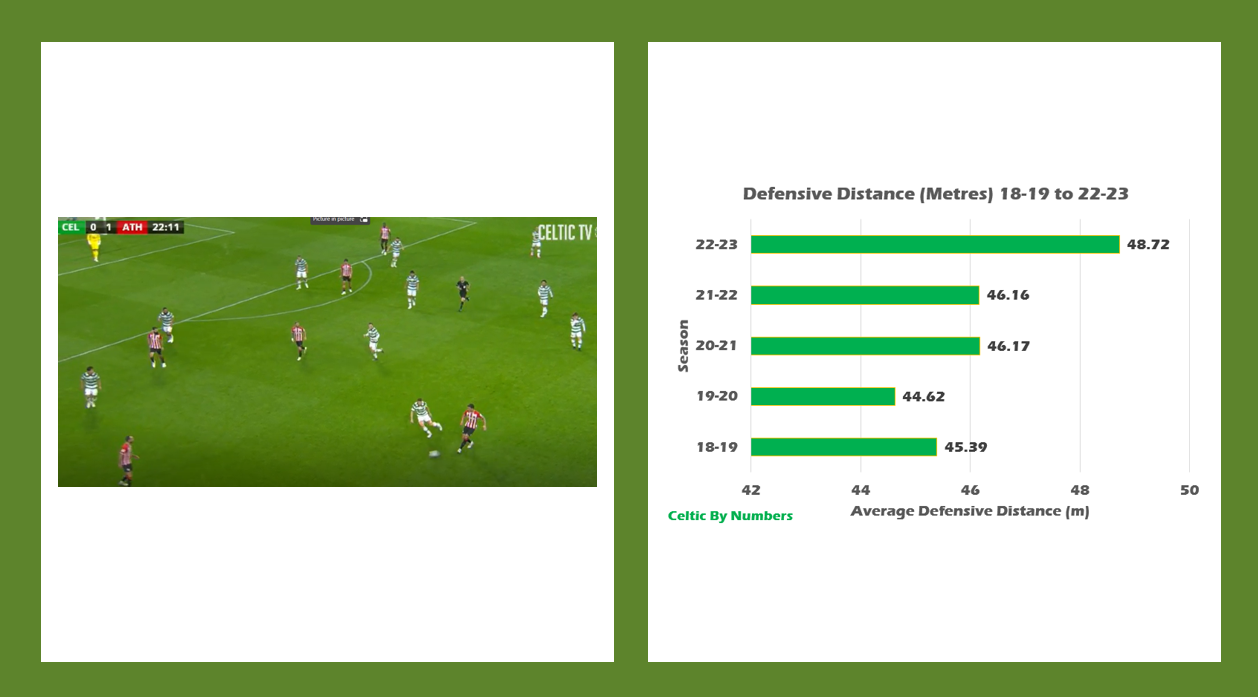Last night’s friendly for James Forrest’s testimonial was another useful work out against high calibre opponents.
All Celtic’s preseason opponents are of a higher standard than most SPFL clubs as the ELO ratings would indicate. Given the mix of higher-level opponent, multiple lineup changes, integration of new players and injury disruption, it is not surprising there were ups and downs to the performances.
All were hugely enjoyable games, to this geek anyway. Celtic’s speed of attack, especially the more aggressive vertical passing than we were previously used to under Brendan Rodgers, was a feature.
Last time out he had the more muscular Moussa Dembele and crafty Leigh Griffiths as primary forwards. Now Rodgers has out and out pace in Kyogo Furuhashi, Daizen Maeda and Liel Abada. This is a coach who will adapt given the players available.
But this piece is focussed on another aspect of play from last night, especially the uncomfortable first half where Celtic were pinned back for large portions of the game.
Defensive line depth
Celtic had their struggles as a new midfield formation lined up in front of a back line with midfielder Tomoki Iwata at right back, Cameron Carter-Vickers returning from long-term injury and Maik Nawrocki making his first start in a Celtic shirt.
Hyeok-Kyu Kwon struggled with the pace of the game and the Athletic Club press. As well as being his first Celtic Park appearance and Celtic start, it is doubtful he has played such quality opponents before in the Korean leagues.
Reo Hatate continually gave the ball away in dangerous areas, and Callum McGregor, pushed slightly further forward, could not get on the ball, and exert his normal control.
Hence the back line was pushed right back onto the Celtic 18-yard box for much of the half.
A feature of defensive organisation under Ange Postecoglou had been an increasing desire to push the Celtic line higher up the pitch.
Why is this important?
The benefits include:
- Making your own players play closer together making it easier to connect through a passing game;
- In turn this reduces player distances to execute the press when the ball is lost; and
- Reducing the space the opposition has to build play.
The risks are obvious in that there is a large swathe of space in behind for a fast, mobile, and willing attacker, like Iñaki Williams.
Playing a higher line also requires excellent communication and organisation as a back line. Something clearly not possible last night as noted.
For Celtic, certainly in domestic football, it is clearly desirable to push the opposition back like this and Postecoglou achieved it:

Year on year Celtic have been playing higher up defensively. In fact, Postecoglou’s first season saw the team no further up than Neil Lennon’s team. But Lennon’s defence included Shane Duffy (built to be a deep defender) and full backs who bombed on in Diego Laxalt and Jeremie Frimpong.
Postecoglou’s side last season played a full 3.5 metres higher up than in Rodgers’s final season. Some of this is to do with general football trends but also managerial football philosophies.
Will Rodgers, in time, get his Celtic team higher up the pitch?
In domestic football I hope so, and in European football I think we’ll see a slightly deeper alignment as we saw last night.
One to keep an eye on.

Thanks for your input on things like this.To someone with a high degree of ignorance on stats and analysis,you explain things really well for me to understand thanks